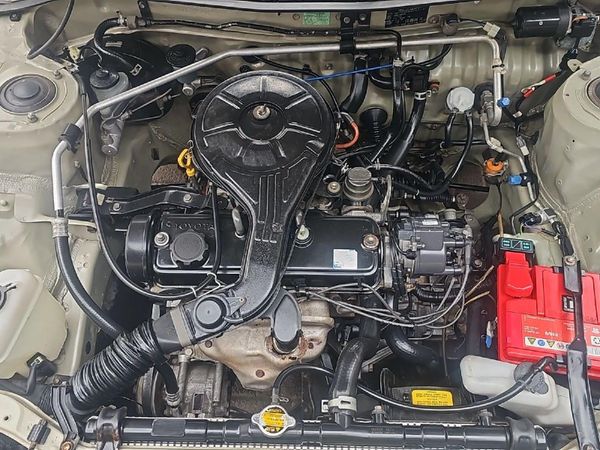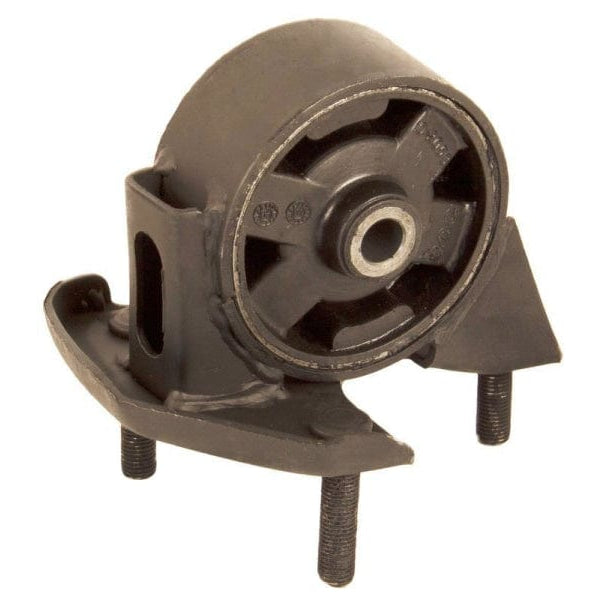Why the Toyota Tazz Remains a Popular Choice for Budget-Conscious Drivers
Why the Toyota Tazz Remains a Popular Choice for Budget-Conscious Drivers
Blog Article
Check Out the most up to date Fads in Engine Technology With Tazz
In the quickly developing landscape of automobile innovation, Tazz stands at the leading edge, highlighting significant advancements in engine systems that focus on both innovation and sustainability. From crossbreed engines that enhance fuel performance to the appearance of hydrogen fuel cells, the fads forming modern-day powertrains are not only improving efficiency but likewise addressing essential ecological obstacles.
Hybrid Engine Innovations
Crossbreed engine developments represent an essential shift in automobile technology, incorporating the advantages of internal combustion engines with electric propulsion systems. This assimilation not only boosts fuel efficiency however also decreases exhausts, meeting increasingly stringent ecological guidelines. By making use of both energy resources, hybrid engines can optimize efficiency, supplying power when required while preserving fuel throughout less requiring motoring conditions.
Current developments in crossbreed modern technology consist of enhancements in battery efficiency and regenerative braking systems. These technologies enable for better energy healing during slowdown, which can be redirected to help in velocity or power auxiliary systems. Moreover, manufacturers are focusing on small layouts and lightweight materials to make the most of the effectiveness of crossbreed powertrains.
The advancement of plug-in crossbreeds has actually likewise broadened the market, allowing chauffeurs to charge their automobiles making use of basic electric outlets. This attribute usually enables significant all-electric range, additional reducing reliance on traditional fuels. tazz. As the vehicle market remains to progress, hybrid engine innovations are anticipated to play a crucial role in bridging the gap between traditional cars and fully electric models, providing a transitional solution that satisfies varied customer requirements and choices
Developments in Electric Powertrains
The automotive landscape is rapidly evolving, with electrical powertrains becoming a leading force in sustainable transport. Developments in electric car (EV) technology are significantly boosting performance, performance, and user experience. Trick advancements include renovations in battery chemistry, which have enhanced energy density, lowered charging times, and expanded general battery life.
Solid-state batteries, for instance, assure to revolutionize the marketplace by offering greater security and performance contrasted to conventional lithium-ion cells. Moreover, improvements in regenerative stopping systems are making it possible for cars to recuperate energy throughout deceleration, adding to overall performance.
Along with battery technology, electrical motor layouts are becoming a lot more innovative. Developments such as incorporated electric motors and advanced thermal administration systems are assisting to enhance power distribution and reduce weight, eventually improving lorry dynamics.

Collectively, these advancements highlight the commitment to transition towards cleaner, more reliable transportation options, positioning electric powertrains at the forefront of automotive innovation.
The Surge of Hydrogen Gas Cells
Progressively, hydrogen fuel cells are acquiring traction as a viable alternative to traditional inner burning engines and battery electric vehicles. This technology uses the chemical power kept in hydrogen, converting it right into power via an electrochemical reaction with oxygen. The primary result of this procedure is water, making hydrogen fuel cells an eco-friendly choice with zero exhausts at the tailpipe.

Car manufacturers are increasingly investing in hydrogen gas cell modern technology, recognizing its capacity for long-range applications and fast refueling capacities that rival standard fuels. Additionally, industries such as durable transportation and public transportation are specifically well-suited for hydrogen fuel cells, where battery electrical solutions may fail because of weight and variety limitations.
As research and financial investment proceed to expand, hydrogen fuel cells are poised to play a substantial duty in the future landscape of tidy transport and energy services.
Enhancements in Internal Combustion Engines
Technologies in interior combustion engine (ICE) technology are changing conventional cars to fulfill modern-day environmental requirements and performance assumptions. Direct gas shot, for instance, permits for much better atomization of fuel, leading to even more complete burning and improved power output.
In addition, turbocharging has actually acquired prestige, enabling smaller engines to supply higher efficiency without the weight of larger engines - tazz. This modern technology not only enhances effectiveness but additionally adds to lower gas consumption. Variable shutoff timing systems are also being fine-tuned, enabling engines to adjust to various driving problems for improved torque and responsiveness
Additionally, using light-weight materials in engine building and construction is coming to be basic, more enhancing gas efficiency by minimizing total car weight. Engine control devices (ECUs) are increasingly advanced, making it possible for real-time modifications that maximize performance and emissions.
These enhancements jointly indicate a critical change in ICE modern technology, aligning with worldwide sustainability objectives while still providing the performance motorists get out of their vehicles. As the sector evolves, these improvements remain to form the future of typical automotive engineering.
Future Patterns in Engine Performance
Substantial advancements in engine efficiency are expected her explanation as makers concentrate on incorporating advanced modern technologies to fulfill stringent environmental regulations and consumer demands. The shift towards electrification, hybrid systems, and alternative fuels is reshaping the automobile landscape, driving developments that boost gas economic situation and lower exhausts.
Among the vital fads is the application of sophisticated materials and producing methods. Light-weight compounds and high-strength alloys add to decreased car weight, thus improving overall performance. In addition, the fostering of turbocharging and variable valve timing innovations allows for boosted power outcome from smaller engines, further enhancing gas economic climate.

Verdict
Finally, the exploration of engine innovation exposes significant improvements that prioritize sustainability and performance. Innovations in crossbreed engine systems, electric powertrains, and hydrogen gas cells show a commitment to lowering discharges while boosting performance. Renovations in internal burning engines and an emphasis on lightweight materials add to overall engine effectiveness. As the auto industry remains to advance, these trends will certainly play an essential function fit a cleaner and more sustainable future for transportation.
From hybrid engines that enhance gas performance to the appearance of hydrogen gas cells, the fads shaping modern powertrains are not only enhancing efficiency yet also addressing vital environmental difficulties.Crossbreed engine advancements stand for a crucial change in auto modern technology, incorporating the advantages of inner burning engines with electrical propulsion systems.In addition, turbocharging has acquired importance, allowing smaller engines to deliver greater efficiency without the weight of bigger engines. Furthermore, the adoption of turbocharging and variable valve timing technologies allows for boosted power result from smaller sized engines, additionally improving gas economic climate.
Enhancements in interior combustion engines and an emphasis on light-weight materials contribute to total engine performance.
Report this page